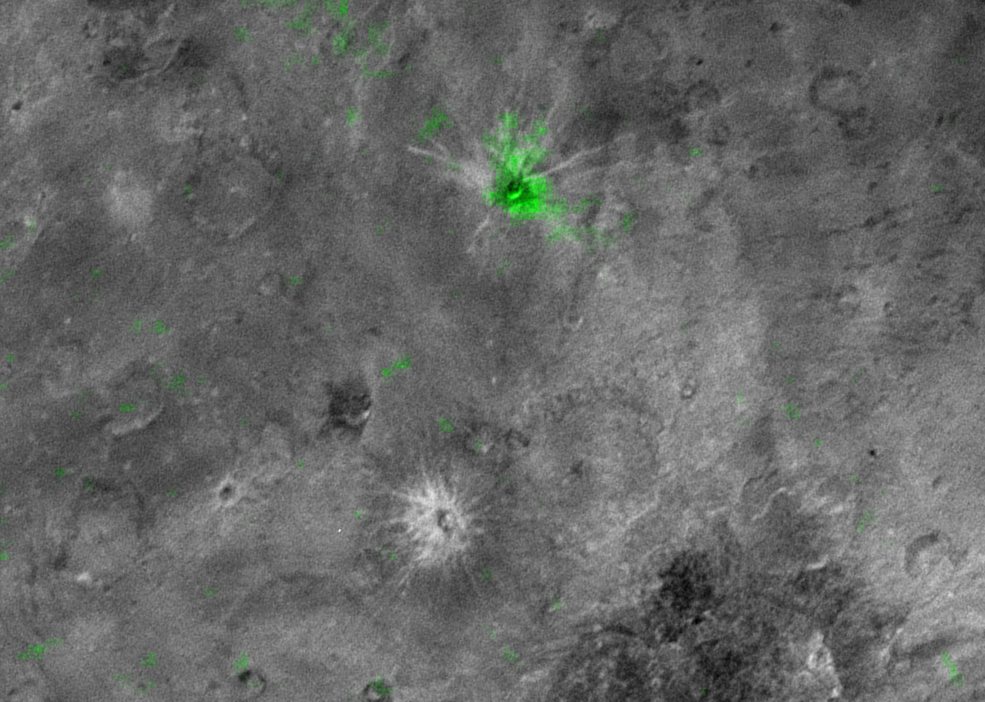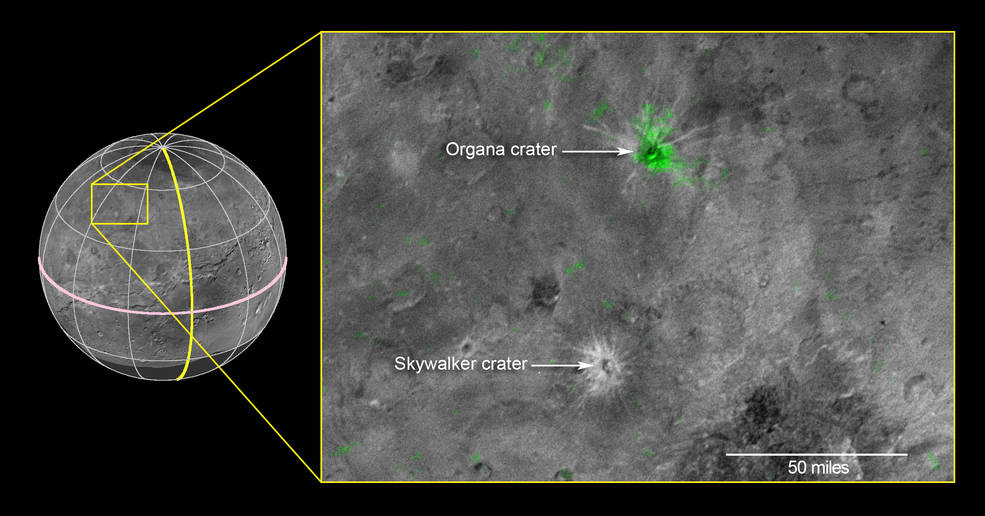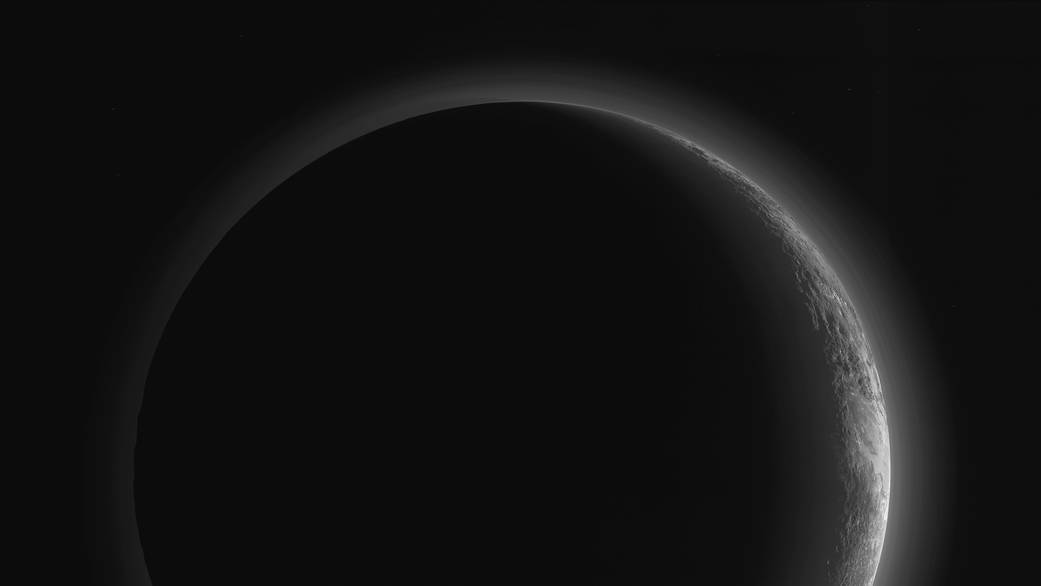The Youngest Crater On Charon and A Beautiful Crescent On Pluto
The latest image from New Horizons shows a crater on Charon that is rich in ammonia, indicating it's a fresh impact.


The New Horizons team also released the complete sunset view of Pluto image. A partial image had been released earlier. It is simply stunning!

For the original Pluto press release, click here.







